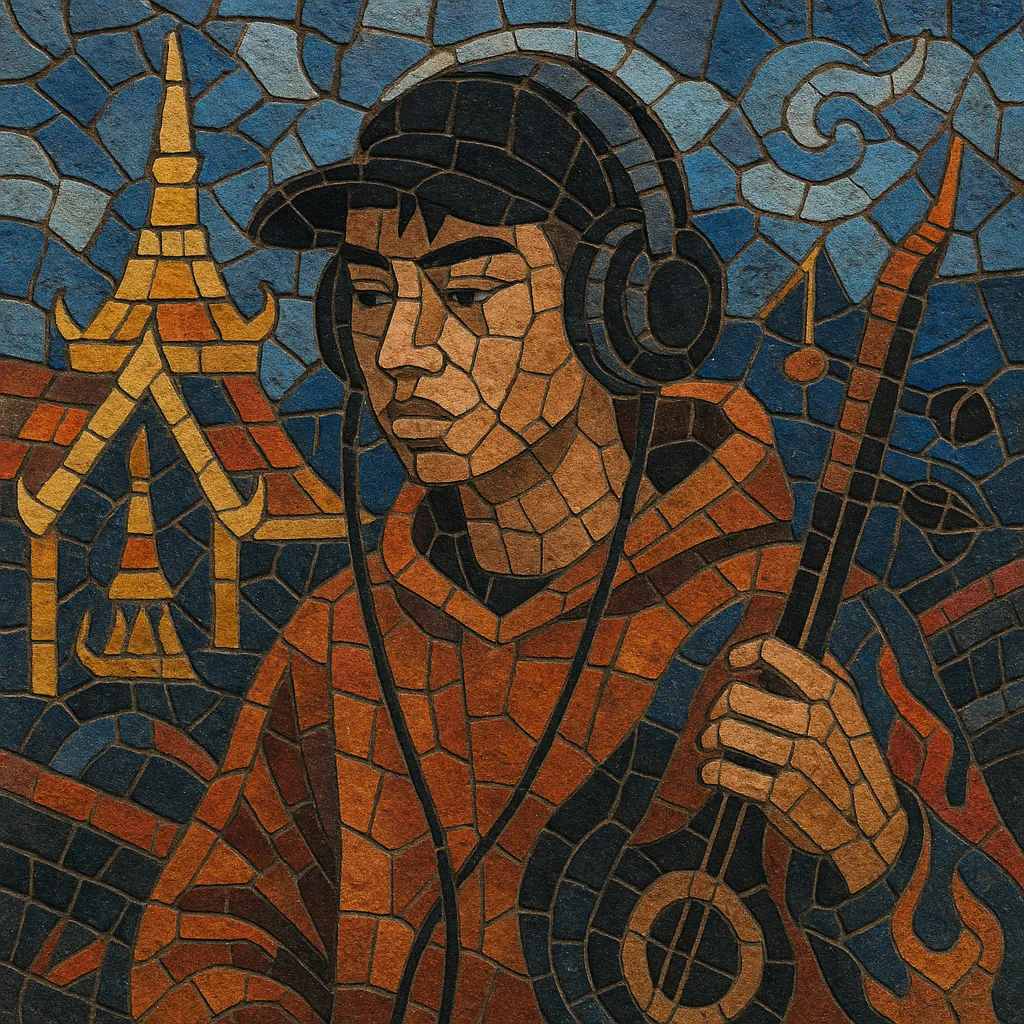Thai trap is Thailand’s localized take on modern trap hip hop, marrying thunderous 808 sub‑bass, stuttering hi‑hat rolls, and halftime grooves with Thai‑language flows and hooks.
Producers often blend contemporary trap sound design with local color—snippets of luk thung and mor lam melodies, pentatonic riffs, or timbres reminiscent of Thai folk instruments—while vocalists switch between melodic Auto‑Tuned choruses and punchy rap cadences. The scene thrives on YouTube, TikTok, and streaming platforms, with visuals that mix streetwear aesthetics, Bangkok nightlife, and regional pride.
Lyrically, Thai trap ranges from braggadocio and party anthems to social commentary, code‑switching between Thai and English slang. The result is a distinctly Thai identity within a globally recognizable trap framework.
Thai hip hop took shape in the late 1990s and 2000s through acts like Thaitanium and Joey Boy, laying the groundwork for domestic rap culture. While these pioneers were not trap artists, they built the audience, infrastructure, and vernacular that would later enable a trap wave.
As the global trap sound (808 subs, rapid hi‑hats, dark pads) dominated U.S. and international charts, Thai producers and rappers adapted it around 2014–2017. SoundCloud, YouTube, and local studios fostered a DIY pipeline where young artists experimented with Auto‑Tune and minimalist beats. The music began to feature Thai slang, regional accents, and occasional nods to luk thung/mor lam melodies.
Television rap competitions (e.g., The Rapper) and viral YouTube hits pushed Thai trap into the mainstream. Crews and labels (YUPP!, HYPE TRAIN, etc.) professionalized the scene, while producers such as NINO popularized sleek, radio‑ready trap production. Charting singles and high‑profile collaborations cemented the sound on Thai playlists and festival stages.
In the 2020s, Thai trap diversified: some artists leaned into melodic trap and R&B crossover, others experimented with mor lam/luk thung samples, EDM drops, or drill‑adjacent grooves. International attention grew via social media virality and festival appearances, showcasing a distinctly Thai flavor within the global trap ecosystem.
Thai trap now sits alongside pop and EDM as a youth‑culture driver in Thailand, shaping fashion, slang, and online trends, while providing a platform for both party‑centric storytelling and pointed social critique.


